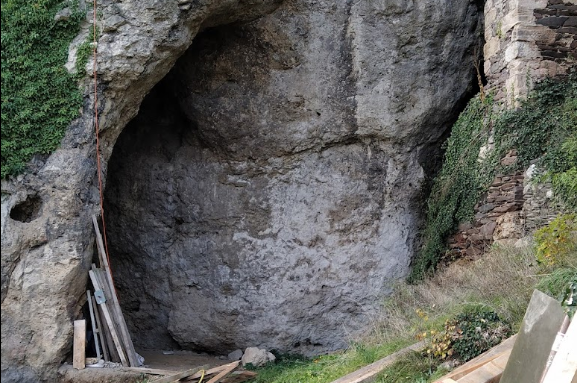Discovery Beneath German Castle May Explain One of Humanity’s Greatest Mysteries.
Others are reading now
A groundbreaking discovery beneath a German castle may shed light on one of humanity’s most enduring mysteries, challenging existing narratives about the timeline of modern humans’ migration north of the Alps.
According to Finnish Mtv Uutiset, this revelation, emerging from the depths of the Ilsenhöhlen cave beneath a medieval fortress in the city of Ranis, Central Germany, suggests that Homo sapiens ventured into areas previously believed to be exclusively inhabited by Neanderthals much earlier than previously thought.
Researchers, led by a team from the Max Planck Institute, have analyzed the remains of thirteen human skeletons found in the cave, determining that these individuals belonged to the Homo sapiens species and lived approximately 47,500 years ago. These findings, published in three comprehensive studies in the journal Nature, mark a significant departure from earlier evidence suggesting the oldest Homo sapiens remains in Central and Northwestern Europe were around 40,000 years old.
The presence of modern humans in Europe at this time indicates a coexistence with Neanderthals, who had evolved on the continent between 500,000 and 200,000 years ago before becoming extinct around 40,000 years ago. The reasons behind the Neanderthals’ disappearance remain unclear, but the new discovery provides intriguing insights into the interactions between these two human species.
Also read
One aspect of the research focuses on the competition for food sources. The harsh climatic conditions of Central Europe 47,500 years ago, at the peak of an ice age, would have made survival challenging. The cave’s other temporary inhabitants, including hyenas and cave bears, alongside evidence of hunting large game such as reindeer, horses, bison, and woolly rhinoceroses, suggest that both Homo sapiens and Neanderthals relied on similar food sources, potentially leading to conflict.
Moreover, the excavation yielded sophisticated stone tools, specifically bifacial leaf-shaped spearheads, previously attributed to Neanderthals but now believed to be crafted by Homo sapiens. This finding challenges assumptions about the cognitive abilities of these early humans and suggests a broader geographic spread of Homo sapiens across Europe.
The discovery raises fundamental questions about the factors that enabled Homo sapiens to survive and thrive, while Neanderthals did not. Was it due to interbreeding, competition, disease, or an inability to adapt to changing climates? Further archaeological explorations in Central Europe aim to provide more data points to understand the impact of climate and human migration on Neanderthal extinction.
This significant find not only adds a new chapter to the history of Homo sapiens in ice age Europe but also highlights the complex interactions between different human species. As research continues, the mysteries of our ancient past and the factors that shaped the course of human evolution become ever more intriguing.


